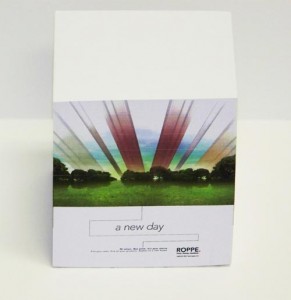I think my current and most active hobby has become productivity in general. Something about learning new ways to be come more efficient at what I do at the office excites me. I share this hobby with people I work with and friends. I do this because it might improve their productivity as well. The process of talking with people about my ideas can also lead to new ideas that can improve productivity even more.
E-Mail
 Interruption is the most detrimental thing to productivity. It doesn’t matter what is going on. If you ask a coworker a question, that person has to switch gears to answer your question, and then switch back to address the task they where originally working on. To me that is just bad edict. Especially when the question does not need to be answered right that second.
Interruption is the most detrimental thing to productivity. It doesn’t matter what is going on. If you ask a coworker a question, that person has to switch gears to answer your question, and then switch back to address the task they where originally working on. To me that is just bad edict. Especially when the question does not need to be answered right that second.
The next time your at the office and you have a question for one of your coworkers you should ask yourself the following:
“Do I need an answer to this right this second?”
In my experience the answer to that question most of the time is “no”. What you should do is write the question down in an e-mail, send it off, and then move on to the next task. Your coworker will address the question the next time he or she is focused on their e-mail. You will then have the answer for your question during an appropriate time you can deal with it. This kind of work flow really does make one much more productive.
But to approach someone or to call out their name from across the office will interfere and affect their work flow. Sometimes it is just unavoidable. Nothing much can be done about that. However, most of the time it is avoidable. Not everything you are working on requires an instant response. So rather then interrupting a person, no matter what they are doing at the time, send your question in an e-mail. If someone writes you with a question, respond to them in that e-mail rather then verbally interrupting them. This process will save you so much time in the long run.
 The paper block is just that, a block of scratch paper that you can terror off. Like a 3M sticky note, but no sticky side. Just paper. The paper block has become a key part of my GTD dump process. Someone storms into my office with something for me to do while I am already working on a project. I jott it down on my paper block, rip of the page and put it in my inbox. Then continue on what I was originally working on. Someone calls while I am in the middle of an office memo e-mail, I write it down on my paper block, rip it off and put it in my inbox.
The paper block is just that, a block of scratch paper that you can terror off. Like a 3M sticky note, but no sticky side. Just paper. The paper block has become a key part of my GTD dump process. Someone storms into my office with something for me to do while I am already working on a project. I jott it down on my paper block, rip of the page and put it in my inbox. Then continue on what I was originally working on. Someone calls while I am in the middle of an office memo e-mail, I write it down on my paper block, rip it off and put it in my inbox.
